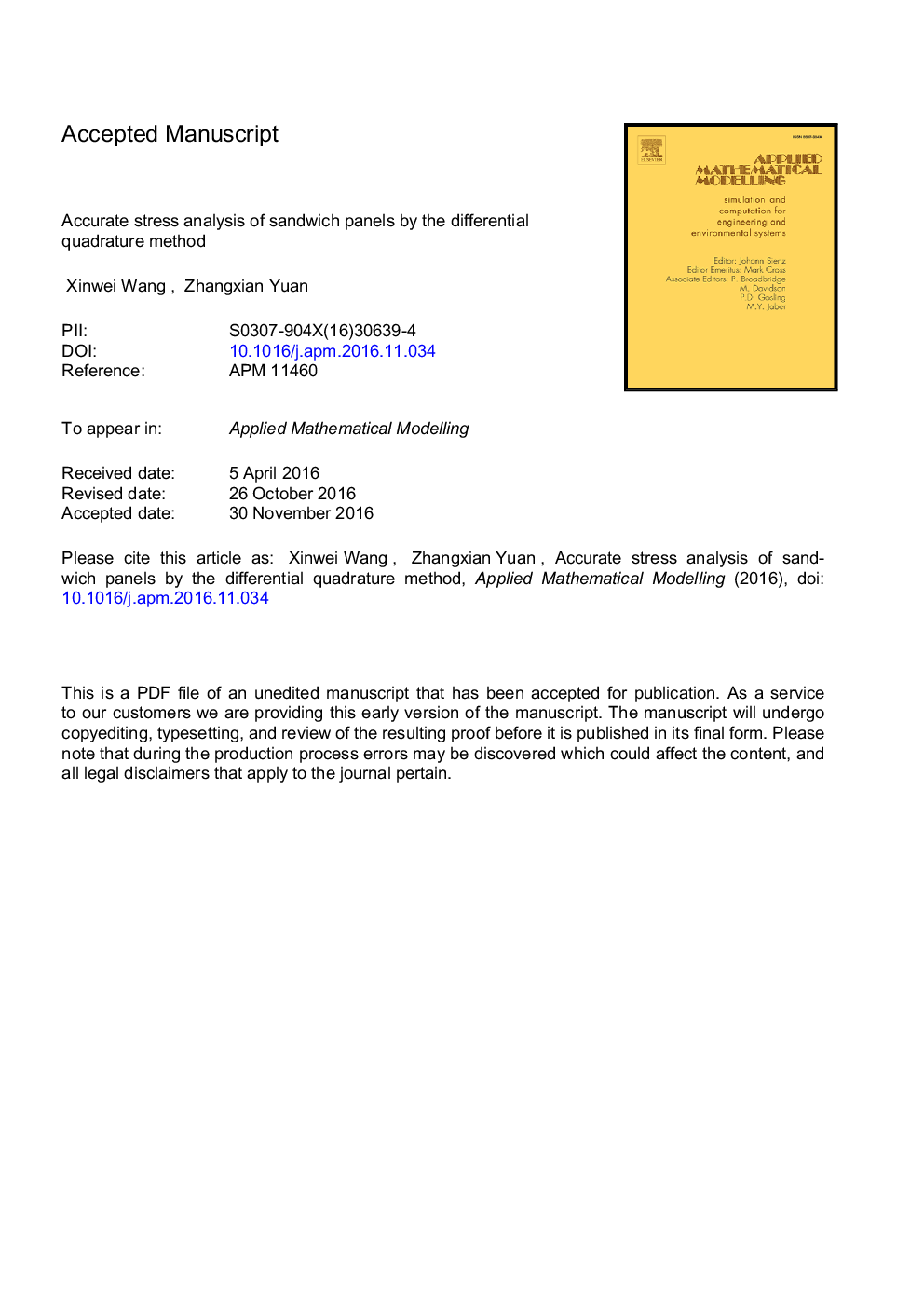| Article ID | Journal | Published Year | Pages | File Type |
|---|---|---|---|---|
| 5471432 | Applied Mathematical Modelling | 2017 | 43 Pages |
Abstract
Sandwich structures are widely used in many engineering fields. It is possible but not easy for an engineering theory to recover all stresses accurately. In this paper, a modeling strategy is proposed to simplify the formulation. A classical sandwich panel is firstly divided into three parts, equations of the top and bottom face sheets are used as the boundary conditions of the two-dimensional core and then only the core needs to be analyzed by the differential quadrature method (DQM). In this way, both displacement and stress can be accurately obtained. Detailed formulations are worked out. Three boundary conditions and three types of loading, including the concentrated load regarded as a challenging problem for point discrete methods such as the DQM, are considered to investigate the effect of boundary conditions and loading on the distributions of displacement and stress. For verification, results are compared with theoretical solutions or/and numerical data. Presented data may be a reference for other investigators to develop more accurate engineering beam theory or new numerical method.
Keywords
Related Topics
Physical Sciences and Engineering
Engineering
Computational Mechanics
Authors
Wang Xinwei, Yuan Zhangxian,
